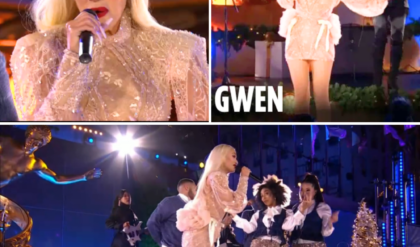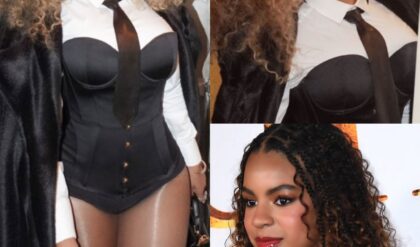A sunken ship. A mysterious lighthouse. A hunt for treasure. A missing father. Teenagers with their own secret hideouts living in a world of haves and have nots.
A lot of books and TV series have influenced “Outer Banks,” from the Hardy Boys and Nancy Drew to the 1960s Alfred Hitchcock and the Three Investigators juvenile mysteries to recent teen mystery TV like “Veronica Mars.” The Netflix series even has more than a little “Dawson’s Creek” DNA in the mix.
“Outer Banks,” with four seasons on Netflix and another, final, season promised, has some clunky moments of earnestness and flippancy and its cast of teenagers looks a little too old for the parts, as with most juvenile-led TV series before them.
But the series is surprisingly addictive and is the type of foreboding, action-filled teen drama we’ve not seen since the heyday of the CW network.
“Outer Banks” is like if S.E. Hinton’s “Outsiders” had traded their angst for racing around in boats and looking at arcane old maps. And “macking” each other, as they say on the new show.
Veronica and the Goonies are all here
“Outer Banks” is a pandemic TV baby. The first season premiered on Netflix in April 2020 and caught viewers’ attention with its young, handsome cast and their shenanigans, including rebelling against authority figures (many of the adults are absent or untrustworthy) and generally living the high life in the perpetual summertime of the Outer Banks of North Carolina.
The dividing lines between the teenagers – the poor Pogues and the rich Kooks – on the island are deep, even though some of the kids can move between the two worlds. The series has levels of society that are familiar to fans of “Veronica Mars” – the poor kids barely getting by and the rich kids with trust funds and punchable faces – and a caste system that existed but didn’t get much commentary in the worlds of the Hardys and Drews. (The Hardy Boys and Nancy Drew were without a doubt Kooks; Nancy’s first adventure finds her expressing gratitude for her “sweet” dad who had given her a convertible for her birthday.)
The main characters as introduced in the first season are John B. Routledge (Chase Stokes), whose father Big John disappeared months earlier in search of $400 million in gold that went down with the ship the Royal Merchant nearly 200 years earlier; Sarah Cameron (Madelyn Cline), the rich princess and daughter of wealthy businessman Ward Cameron (Charles Esten); Pope Heyward (Jonathan Daviss) as the brainy sort who spends a lot of the first season worried about his scholarship interview; Kiara “Kie” Carerra (Madison Bailey), the daughter of a successful restaurant owner but who considers herself a Pogue; and JJ Maybank (Rudy Pankow), a Pogue through and through, funny and reckless and suffering at the hands of his abusive white-trash father.
The plot driving the series early on is that Royal Merchant gold, with John B. convinced that before his father disappeared, he was trying to steer him toward where the hundreds of millions can be found.
There are the kids with the aforementioned punchable faces, led by Austin North as Topper – because of course that’s his name – Sarah’s boyfriend. There’s also Drew Starkey as Rafe, Sarah’s psychotic older brother. Topper and Rafe are totally the fraternity brothers from “Animal House,” updated to the 21st century.
Created by Josh Pate, Jonas Pate and Shannon Burke, “Outer Banks” takes its cue from every book, TV series and movie that’s ever pitted a group of lovable misfits against the world in pursuit of treasure and/or justice. It’s “The Goonies,” skewed slightly older and featuring acres of tanned skin and perfect teeth.
Speedboats and scuba
The first season of “Outer Banks” begins and ends with a hurricane and does a great job of emphasizing the life-changing effects of big storms, including (for the purposes of that find-the-shipwreck plot) the tendency for perils and treasures above and below the water’s surface to be relocated.
There’s a lot of action – fistfights, exploring spooky locales – in “Outer Banks” and quite a bit of romance as John B. and Sarah give in to the “enemies into lovers” trope, much to the upset of both Pogues and Kooks. There’s some Romeo and Juliet vibes to the couple. The other Pogues could use a little more romance in their storylines.
But John B., an affable outcast obsessed with finding his father and proving wrong everyone who says the older Routledge was lost at sea, and Sarah, a rich kid who’s feisty and sympathetic to others, have the kind of mutual attraction that marked Veronica and Logan’s romance on “Veronica Mars.”
Reaching back to earlier influences, there’s speedboat racing, scuba diving and haunted house exploring – as well as the aforementioned mysterious lighthouse – that would fit right in to the best of the juvenile mystery series of the 20th century. The Pogues’ beat-up VW van is a much less tricked-out version of Scooby Do’s Mystery Machine. There’s no talking dog, though, just JJ as a pothead to rival Shaggy.
“Outer Banks” has one downside of being a successful streaming series in that the creators and showrunners know they must keep the story going, so they don’t resolve the mystery of the shipwreck gold by the end of the first season. I wanted to see, if not riches heaped on the Pogues, at least more comeuppance for the Kooks.
I haven’t watched the entire series, but it looks to send the small band of Pogues pretty far away from the Outer Banks in later seasons. That trend happens as early as the end of the first season, which finds a couple of characters bound for the Bahamas.
I’m fine with that, although removing too many ties to the show’s setting, which is rich and entertaining in its poor vs. rich storylines, sounds like a mistake.
But maybe “Outer Banks” isn’t just a place, but the shipwreck gold the Pogues pursue along the way?





